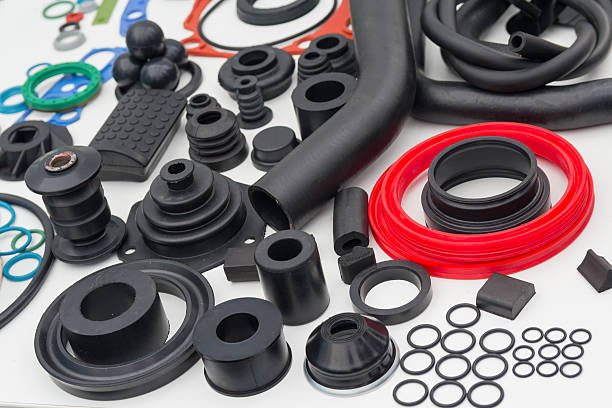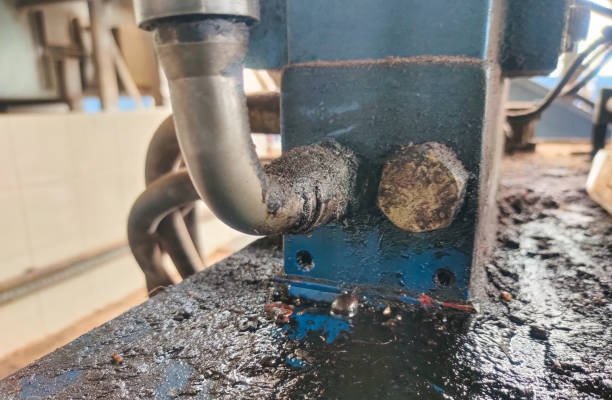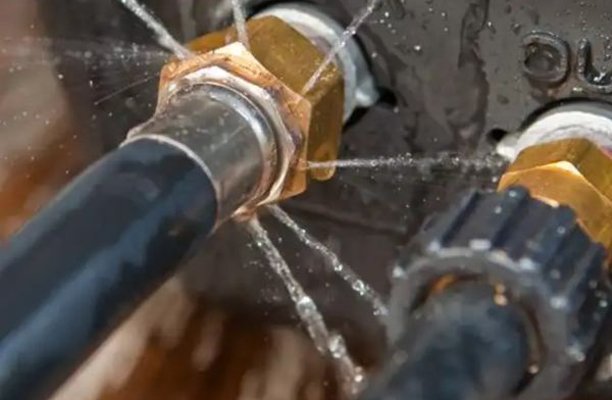O-rings are integral components in a wide range of industries, providing a simple yet effective solution for sealing applications. Whether used in automotive, aerospace, industrial, or fluid systems, the material of the O-ring plays a pivotal role in its performance. Choosing the right O-ring material ensures a reliable seal and enhances the longevity of the application.
This article will walk you through the essential factors to consider when selecting the ideal O-ring material. From understanding the environment where the O-ring will function to knowing the pressure, temperature, and chemical compatibility, we’ll cover all the critical points to ensure you make an informed decision.
Understanding O-Rings and Their Functionality
O-rings are mechanical seals designed to fit into grooves and prevent the passage of fluids or gases in a variety of machinery and equipment. The shape of the O-ring is a simple circle, with a cross-sectional profile that allows it to fit snugly into a sealing groove.
The primary role of an O-ring is to form a tight, leak-proof seal between two mating surfaces. This seal is created when the O-ring is compressed, filling any gaps or irregularities in the surfaces, thereby preventing the escape of fluid or gas.
For an O-ring to be effective, it must be made of the appropriate material. Various factors, including the specific application, temperature, pressure, and chemical exposure, influence the choice of O-ring material.
Why Choosing the Right O-Ring Material Is Critical
Choosing the right material for an O-ring is not a one-size-fits-all task. The material directly influences the seal’s durability, flexibility, and resistance to wear and tear. If the wrong material is selected, it can lead to O-ring failure, leaks, or even catastrophic damage to machinery or systems.
For instance, an O-ring exposed to high temperatures may degrade quickly if made of a material that lacks heat resistance. Similarly, an O-ring in contact with aggressive chemicals or solvents must be made from a material that offers chemical resistance to prevent deterioration.
Selecting the proper O-ring material is thus a matter of balancing the specific demands of your application with the properties of available materials.
Key Factors to Consider When Choosing O-Ring Material
There are several important factors to evaluate when selecting the right O-ring material for your application. Here’s a breakdown of these key considerations:
Temperature Resistance
One of the first things to evaluate is the temperature range the O-ring will be exposed to. Both extreme heat and cold can affect the performance of O-rings. Materials that perform well at high temperatures may become brittle at low temperatures and vice versa. Make sure to select a material that maintains its elasticity and sealing capabilities across the intended temperature range.
For example, nitrile rubber O-rings are excellent for general-purpose applications at moderate temperatures. While materials like fluorocarbon are ideal for higher temperatures, up to 300°C (572°F).
Pressure and Load Tolerance
Pressure can also significantly impact O-ring performance. When choosing the right O-ring, consider both the operating pressure and the potential pressure surges that could occur. Certain materials can handle high-pressure environments, while others may distort or lose their sealing ability under such conditions. For high-pressure systems, materials like PTFE or elastomers like Viton are often the best choice due to their durability under stress.
Chemical Compatibility
The chemical environment is another critical factor. Exposure to chemicals, oils, or fuels can degrade an O-ring over time. Especially if it is not made from a material with the appropriate chemical resistance. It’s essential to choose a material that can withstand the specific chemicals. And it will encounter in your application without degrading, swelling, or cracking.
For instance, fluoroelastomers (like Viton) offer excellent chemical resistance to fuels and oils. While silicone O-rings can resist a range of chemicals and offer superior high-temperature stability.
Flexibility and Compression Set Resistance
O-rings must maintain their flexibility even after long periods of compression. Materials that exhibit a high compression set will lose their ability to return to their original shape after being compressed. This can result in loss of sealing performance over time. Materials such as EPDM (and fluorosilicone tend to have low compression set resistance, ensuring a long-lasting seal.
Environmental Conditions and Wear Resistance
Environmental exposure, such as UV radiation, ozone, water, or extreme humidity, can take a toll on O-rings over time. For outdoor or high-humidity use, choose a material with strong resistance to environmental factors.
Materials such as EPDM are often used for outdoor applications because of their resistance to ozone and UV degradation. Similarly, materials like nitrile or silicone may be used when environmental durability is a top priority.
Cost and Availability
The cost of O-ring materials can vary significantly. Nitrile is affordable and common, while PTFE and fluorocarbon are pricier due to their specialized properties. Consider both the material’s performance and your budget when making a decision.
Popular O-Ring Materials and Their Applications
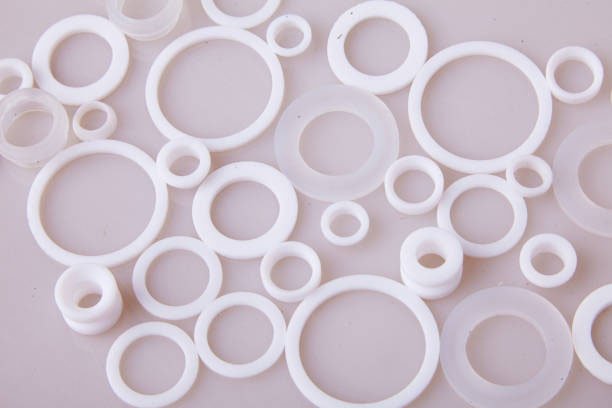
Different O-ring materials offer varying benefits depending on their chemical composition, elasticity, and temperature resistance. Let’s explore some of the most popular O-ring materials and their typical uses.
Nitrile (NBR)
Nitrile is widely used for its excellent resistance to oils, fuels, and petroleum products. It also offers good wear and tear resistance, making it suitable for automotive, industrial, and hydraulic systems. However, nitrile is not ideal for high-temperature applications, as it can degrade at temperatures above 100°C (212°F).
Viton (FKM)
Viton is a high-performance fluorocarbon material known for its exceptional resistance to high temperatures, chemicals, and ozone. It’s commonly used in industries such as aerospace, automotive, and chemical processing, where high-performance seals are required. Viton O-rings can handle temperatures ranging from -15°C (5°F) to 200°C (392°F).
EPDM
EPDM (Ethylene Propylene Diene Monomer) offers strong resistance to water, steam, ozone, and UV. It’s commonly used in applications such as HVAC systems, automotive, and outdoor seals. However, EPDM should not be used in contact with oils or fuels, as it can degrade.
Silicone (VMQ)
Silicone O-rings are highly flexible and resistant to extreme temperatures. They are often used in applications that require high-temperature resistance, such as medical devices, food processing, and pharmaceutical industries. Silicone O-rings can withstand temperatures between -100°F to 500°F (-73°C to 260°C), but they are not ideal for applications involving oils or fuels.
PTFE (Polytetrafluoroethylene)
PTFE is a durable, chemically resistant material capable of withstanding high temperatures, commonly used in chemical, pharmaceutical, and food industries. While PTFE O-rings offer outstanding chemical resistance, they lack the elasticity of elastomers such as nitrile or silicone, making them less suitable for dynamic sealing applications.
Testing and Quality Control
Before using an O-ring in critical applications, it’s essential to verify that it meets the required performance specifications. Testing for seal integrity, compression set, and chemical resistance should be part of the quality control process. Many O-ring manufacturers provide detailed data sheets that outline the material’s performance in various environments. So be sure to consult these resources.
Further Considerations for O-Ring Material Selection
While the factors discussed above cover the primary considerations for selecting the right O-ring material, there are additional nuances to account for when making the final decision. These factors can further influence the longevity and performance of the O-ring in your specific application.
Dynamic vs. Static Seals
Understanding the distinction between dynamic and static sealing applications is critical when choosing the appropriate O-ring material.
- Static Seals: In static applications, the O-ring is used in a non-moving position where there is little or no movement between the sealing surfaces. This type of sealing requires an O-ring material with excellent compression set resistance and durability under pressure. Materials like nitrile, EPDM, and Viton are commonly used for static applications.
- Dynamic Seals: In dynamic applications, the O-ring must function while subjected to movement, such as in pistons, shafts, or other machinery parts that move relative to one another. For dynamic seals, you need a material that offers both low friction and the ability to maintain sealing integrity under motion. Materials like PTFE, polyurethane, or elastomers such as Viton or silicone are often the best choice for dynamic seals.
Shore Hardness of the Material
Shore hardness is a measurement of the material’s resistance to indentation. It is an important factor to consider, as the hardness of the O-ring affects its ability to deform and create a seal under compression. The higher the Shore hardness, the stiffer the O-ring will be, while a lower Shore hardness indicates a softer, more flexible O-ring.
For most sealing applications, a medium hardness of 70 Shore A is preferred, but the exact hardness required will depend on the sealing application. Soft O-rings are ideal for creating tight seals in low-pressure systems, while harder materials are better suited for high-pressure environments.
O-Ring Groove Design
The design of the O-ring groove, along with the material selection, plays a significant role in ensuring proper sealing performance. The groove must be designed to accommodate the O-ring’s compression and allow it to function effectively. It’s essential to have an O-ring groove that matches the material’s characteristics and ensures that the O-ring is neither too compressed nor too loose.
The groove dimensions should be matched to the O-ring’s diameter, cross-sectional area, and material properties, as improper design can lead to sealing failures such as blowout, leakage, or excessive wear.
The Role of O-Ring Lubrication
In some applications, the use of lubricants on O-rings can improve their performance and prolong their lifespan. Lubrication helps reduce friction, prevents dry running, and minimizes wear and tear, especially in dynamic applications where movement occurs between the sealing surfaces. Depending on the O-ring material, different types of lubricants (such as silicone, petroleum-based, or water-based) may be required.
When using lubricants, ensure that they are compatible with both the O-ring material and the application environment. For example, while lubricants can help reduce friction in high-temperature environments, some lubricants may cause certain O-ring materials to degrade or swell.
Environmental Considerations
In addition to temperature, pressure, and chemical exposure, environmental conditions such as humidity, UV exposure, and ozone can influence the longevity of O-rings. Consider the location of your system and whether the O-ring will be exposed to direct sunlight, extreme weather, or environmental contaminants.
For outdoor applications, materials like EPDM or neoprene are often preferred due to their resistance to ozone and UV degradation. Similarly, if the O-ring is used in submerged or aquatic environments, choosing a material resistant to water or wet conditions, such as fluorosilicone, will ensure its reliability.
Durability and Longevity Expectations
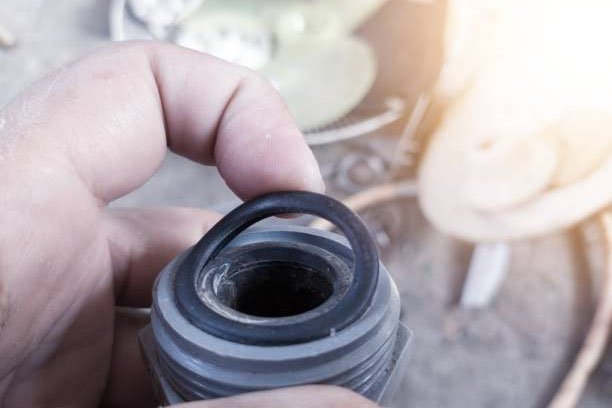
Some applications demand a long service life for the O-ring, particularly in critical systems where replacement may be costly, time-consuming, or challenging. In such cases, the durability of the O-ring becomes a significant factor. Materials like Viton or PTFE are known for their long-lasting durability in high-demand applications, while materials like silicone and EPDM, while reliable, may have a shorter service life in extreme conditions.
For systems where maintenance access is difficult, it is advisable to opt for high-quality, high-durability materials to minimize the need for frequent replacements.
The Importance of O-Ring Testing and Certification
Before using O-rings in a mission-critical application, it is vital to confirm that the selected material meets relevant industry standards and regulatory requirements. Many industries, such as aerospace, automotive, and medical, require O-rings to meet specific certifications or standards, ensuring their performance and safety in challenging environments.
Certification standards, such as ISO 9001 or ASTM D2000, define the quality and performance parameters for O-rings used in specific applications. Always check that the manufacturer’s O-rings are compliant with these standards and ensure that they undergo rigorous testing for parameters like chemical resistance, compression set, temperature stability, and more.
Moreover, working with trusted suppliers who conduct routine quality checks and provide data sheets detailing the material properties will provide additional assurance that your O-rings are reliable and suitable for your application.
Maintenance Tips for Prolonging O-Ring Lifespan
Even with the best O-ring material and proper installation, ongoing maintenance can extend the lifespan and performance of your seals. Here are a few maintenance tips to consider:
- Regular Inspection: Routinely inspect O-rings for signs of wear, cracks, or degradation. Look for any swelling, shrinkage, or discoloration that could indicate material breakdown.
- Cleanliness: Keep the O-ring and surrounding groove clean to prevent contaminants like dirt or debris from interfering with the seal’s performance.
- Lubrication: When applicable, ensure the O-ring is properly lubricated to reduce friction and prevent dry running, which can lead to wear.
- Proper Storage: If you need to store unused O-rings, keep them in a cool, dry, and dust-free environment. Avoid exposure to direct sunlight, extreme temperatures, or ozone, as this can prematurely degrade the material.
Conclusion
Selecting the right O-ring material is crucial for ensuring long-lasting, reliable performance in any sealing application. By considering factors such as temperature, pressure, chemical compatibility, and environmental conditions, you can identify the material that best suits your needs. While the process may seem complex, understanding the core requirements of your application and the properties of different O-ring materials will help you make a well-informed decision.
Always consult with a supplier or manufacturer for guidance, and ensure that the O-ring material you choose aligns with the intended service conditions. By doing so, you can prevent premature failures, reduce downtime, and enhance the efficiency of your equipment.
FAQs
- What factors should I consider when choosing O-ring material?
- Key factors include temperature range, pressure tolerance, chemical exposure, and environmental conditions, such as UV radiation or moisture.
- Are there any O-ring materials resistant to extreme temperatures?
- Yes, materials like Viton, silicone, and PTFE offer excellent resistance to high temperatures, making them suitable for extreme thermal conditions.
- How can I tell if my O-ring material is compatible with certain chemicals?
- Manufacturers provide compatibility charts and data sheets that detail the chemical resistance of various materials. Always consult these resources to ensure compatibility.
- Do all O-rings require lubrication?
- Not all O-rings require lubrication, but in dynamic applications, lubrication can reduce friction and extend the lifespan of the O-ring.
- What is the typical lifespan of an O-ring?
- The lifespan of an O-ring depends on the material, operating conditions, and maintenance. High-performance materials like Viton can last longer, while others may wear out more quickly.
- Is it possible to replace an O-ring without disassembling the entire system?
- In many cases, it is possible to replace an O-ring without disassembling the entire system, but it depends on the design of the equipment and the accessibility of the O-ring.

